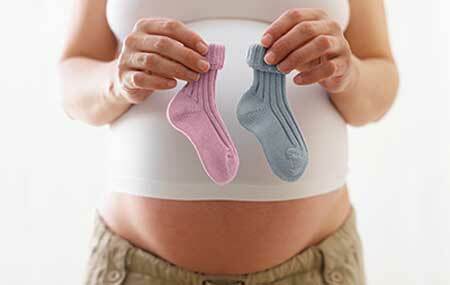Endometriosis, or escaped bird-Phoenix
Today our conversation will go about endometriosis. It is a disease that many people without a medical education can hardly understand. Of course, in order to completely be "in the subject", you need to have the knowledge not only of the gynecologist, but also of the endocrinologist.
And, nevertheless, we will try to explain intelligibly: what is endometriosis of the uterus? Available language, without the use of professional medical terms. To do this, we need to first remember what the endometrium is, and why the suffix "oz" has suddenly been added to it, turning into a disease.
About the structure of the endometrium and its cyclic changes
Everyone knows that babies are born in the uterus. But not everyone knows that a fertilized egg can not just "cling" to the wall of the uterus. For this, she immerses herself in the endometrium - the epithelium of the uterus, which lining her inner surface, like the epithelium lining our mouth.
- But our epithelium of the oral cavity, stomach and intestines is renewed and sluschy constantly, so it does not change in any way, and it seems constant.
This is not the case with the internal epithelium of the uterus. Endometrium every month arises again, and every month it collapses, leaving in the form of monthly. This suggests that it was not useful, fertilization did not happen, and the "soft bed" for immersion and nutrition of the embryo was superfluous.
It would seem, why such difficulties? You could do without the menstruation. Let the endometrium live quietly, and when a fertilized egg appears, he would take it in himself, provide food, and then form the villus of the chorion from which the placenta would have turned out.
Alas, this is impossible. The structure of the multilayer flat non-coring epithelium is completely inappropriate for this. Therefore, you need a loose, and very tender endometrium, which "lives and dies" according to the fluctuations in the hormonal cycle of a woman.
Thus, the endometrium is a "bird - Phoenix", which is reborn "from the ashes" every month, in the hope of fulfilling its function and providing the embryo with food and space.
And what will happen if this endometrium "starts to riot"?He is born, lives and dies, obeying the fluctuations of hormones. This is the riot of the endometrium and is called endometriosis. Now it becomes clear the definition of the disease, which will be surprisingly laconic.
Contents of
- 1 Endometriosis - what is it?
- 2 Causes of endometriosis
- 3 Symptoms and signs of endometriosis in women
- 4 Diagnosis of endometriosis, analyzes of
- 5 Treatment of endometriosis - drugs and operation
- 5.1 Prognosis of treatment
Endometriosis - what is it?

Endometriosis is a condition in which the endometrium is outside the prescribed layer in the uterine body. All. This very short definition makes you think, and as a result it turns out that:
- If the endometrium for some reason does not lining the uterus from within, but penetrated into the depth of its wall - then, disintegrating in the period of menstruation, it can not go outside. This condition is called adenomyosis. As a result, cysts are formed, which are called "chocolate".It's just a period that was "locked" in the uterus wall.
- If the endometrium is outside, then begin to menstruate and bleed those surfaces on which it is located. This can be the vagina, higher - the cervix, even higher - the tube and other localization in the genitals.
Above we talked about genital varieties of endometriosis. Although "rioting", he did not leave the zone of the genitals. But sometimes there is extragenital endometriosis .For some reason, not fully understood, the endometrium can grow, for example, in the bladder. And then once a month he starts to reject, which will cause the appearance of blood in the urine.
Endometrium may appear in the lungs, which will cause the appearance of hemoptysis in the period of menstruation( of course, if there is a large bronchus nearby).Foci of endometriosis can occur even in the tissues of the eye. So, imagine that in this case, the eyes "will have a period".
The suffix "oz" means "excessive growth, proliferation," or "wealth" by some kind of cloth. This dubious "wealth" is extragenital, or ectopic( which is not there, where necessary) endometriosis. What are the reasons for the proliferation of the endometrium?
Causes of endometriosis
It turns out that endometrial cells are very tenacious. In a sense, they are like a tumor metastasis, or eggs of parasites. The main task is to get the cells of the endometrium somewhere in a foreign place, and there they "take root", turning into islets of new tissue. The reasons for the appearance of foci include:
- sexual intercourse during menstruation;
- various gynecological operations, such as manipulation and curative curettage;
- abortions, both legal and criminal;
- installation and removal of intrauterine contraceptives;Caesarean section.
It is assumed that this results in the flow of blood and fluid, which through the fallopian tubes can carry "disturbed" endometrial cells, for example, far into the abdominal cavity, which contributes to the appearance of ectopic foci.
In addition, even if there are no manipulations and reasons to "disturb" the endometrium, it can happen spontaneously. When menstruating small lymphatic and blood vessels are opened, and the endometrium can suck in there, settle somewhere in remote areas and settle down.
Paradoxically, this "abnormal" menstruation can develop in men, but in special cases.
Thus, in the treatment of prostate cancer, very high doses of female sex hormones are sometimes used. This causes suppression of the tumor, but "for the company", causes the degeneration of the bladder epithelium, in which the endometrium arises.
An important role in the appearance of foci of endometriosis is played by a drop in immunity. After all, endometrial cells for immunity are "their own", while they are in place. But in the event that they are in the blood - they must be cruelly caught and destroyed. And if macrophages and leukocytes are "hindered", or they are few - then endometriosis can develop. What are the signs of this disease?
Symptoms and signs of endometriosis in women

The most pronounced symptom of endometriosis( for example, the uterus) is the lower abdominal pain that appears with an enviable regularity on the eve and during menstruation. In some cases, when the pressure of the detached epithelium is high, the pain is very strong, and it is given to the sacrum and lower back, which can simulate a herniated disc and neurological pathology( sciatica, lumbago).
In general, any pain( in the genital tract, behind the uterus and in the Douglas pocket, in the rectum, in the abdomen), which persistently returns on the eve of the menstruation and accompanies them, gives rise to the search for extragenital foci of endometriosis.
Signs of endometriosis in women can also be abundant, prolonged and irregular monthly. There is dysmenorrhea, menstruation becomes irregular, infertility appears. In the event that endometriosis affects the ovary, then it does not appear a healthy egg. There is an anovulatory cycle that does not lead to fertilization.
Endometriosis is the second most frequent diagnosis of infertility.
It is worth mentioning that the severity of the pain and severity of the condition is not related to the number and massiveness of the foci. Sometimes a lot of foci of endometriosis is easily transferred, and the individual and small cause severe suffering. How can I suspect endometriosis?
Diagnosis of endometriosis, analysis of
Diagnosis begins with the clarification of the patient's complaints, which is manifested by pain and malaise associated with menstruation. In addition to questioning, the following methods are of great importance in diagnosis:
- Conventional gynecological examination( both vaginal and rectal, with palpation of the anterior abdominal wall).
On the eve of the month, you can find dense formations that can bulge into the lumen of the hollow organs. It is nothing but an endometrioid cyst. They can not decrease, because there is no way out of the cysts. They are only threatened with a gradual increase with each subsequent monthly, until the cyst ruptures.
- Colposcopy. In some cases, with the localization of foci on the cervix and the walls of the vagina, you can see specific eyes, or nodules of bluish color;
- Ultrasound examination. Is a modern, fast, accurate and painless way to determine the localization, size, internal structure of the cyst, and, in some cases, to predict;
- Laparoscopy with the possibility of biopsy in the case of extragenital variant of endometriosis;
- Hysteroscopy. During the examination of the uterus, lesions similar to those seen in colposcopy can be seen;
- CT and MRI.With these visualization methods, localizations of various cysts are visible.
In addition to these general diagnostic methods, others are used - in each case to search for a lesion of special localization.
Treatment of endometriosis - drugs and operation
Treatment of endometriosis in women is possible with the help of therapeutic and surgical methods of treatment. Previously, endometriosis, especially in women giving birth, preferred to operate, sometimes with the removal of reproductive organs. Currently, with the development of laparoscopic surgery, only focuses of endometriosis are removed, and laser surgery is often used.
This is especially convenient if the ectopic focus occupies a small area, is well delimited from the surrounding tissue, large vessels are not located near it, and there is good operative access to it. In this case, several foci can be safely removed, even during one laparoscopy.

Indications for operation
What are the indications for surgical treatment to date?it is usually carried out in the following situations:
- The presence of adenomyosis( i.e. nodes within the uterus where an increase occurs, endometrial hyperplasia);
- Endometriosis of the ovaries in combination with precancerous diseases of them and hyperplasia;
- In the event that therapy with drugs has been ineffective for 3 months or more;
- In the event that there are pronounced contraindications to the appointment of hormones( diabetes, varicose veins, cirrhosis, various forms of hepatitis, migraine, severe hypertension, mental disorders);
- If endometriosis "neighbors" with other diseases of the genitalia, which need to operate( for example, myoma).In this case, the operation is carried out "for the company".
In the case of uterine endometriosis in young women who are still going to give birth, a myomectomy is performed. It is an organ-preserving operation, and if women are not interested in the function of procreation, they perform either a supra-vaginal amputation of the uterus or an extirpation.
Conservative treatment of endometriosis, drugs
The doctor prescribes a comprehensive treatment, which includes:
- Diet( high-calorie food with a reduction in the number of spicy and spicy dishes, irritating spices);
- Immunocorrection and vitamin therapy;
- Symptomatic therapy( analgesia, anti-inflammatory drugs);
- Normalization of the functions of the hypothalamic-pituitary system, individual glands of endocrine secretion( thyroid).
But the main drugs are hormones - drugs for the treatment of endometriosis in women. In order to erase the process of growth of ectopic foci, we need not even hormones, but "antihormones."It is necessary to stop the cycle of menstruation, only in this case the activity of the foci will disappear.
For the treatment of endometriosis apply:
- Oral contraceptives, or estrogen are progestational medications. So, "Zhanin" is used in endometriosis, it is a combination of "estrogen + progesterone";
- Progestogens and gestagens. Preparations from this class( for example, with endometriosis "Byzanne" is used).The action of this group of drugs is based on the fact that they are firmly associated with receptors that bind estrogens and progesterone, and as a result, androgen receptors are released. In toga, they have a direct antiestrogenic and antiprogesterone action. Similarly, with endometriosis, this group uses "Dufaston";
- Antiprogestins. The synthetic steroid gestrinone belongs to them synthetically;
- Anti-estrogen preparations( tamoxifen, "Cytosonium").It blocks estrogen receptors, and also suppresses both growth and formation of follicles;
- "Danazol", or inhibitor of gonadotropins. Its action is to create a controlled drug-induced artificial menopause. The final action is suppression of proliferation and secretion of specific endometrial glands. Its best dosage is the amount of 400 mg / day;
- Drugs from the gonadotropin - releasing factor agonist group. These include "Zoladex".As a result, not menopause develops, but a kind of "medical castration" at the highest level.
Apparently, the choice of drugs for endometriosis is great. The doctor who is carrying out therapy of an endometriosis, should be the gynecologist - the endocrinologist, and to have experience of treatment of such diseases. After switching off one or more links from the system of hormonal regulation in the field of reproduction can lead to unpredictable consequences. To prevent this, the doctor should know the side effects.
Prognosis of
treatment We got acquainted with such a complex disease as endometriosis, in an accessible language we disassembled its symptoms and variants of surgical and drug treatment. Nevertheless, we have touched only the "tip" of the iceberg. In general, the issues of regulation with the help of hormones of the female body and reproductive function are among the most difficult in all medicine.
So, ideally, the gynecologist - endocrinologist, gynecologist - surgeon and mammologist should deal with endometriosis treatment. In some cases, an abdominal or thoracic surgeon may be required, in the case of an operation on the thoracic or abdominal cavity.
Even after successful therapy of endometriosis, it is time to take up prevention. Its goal is to block the retrograde menstrual blood flow( you can not give significant physical activity during the period of menstruation), it is not necessary to carry out gynecological examinations in monthly ones.
It is necessary to fight abortion, and if surgical interventions are indicated( for example, with erosions of the cervix), then this should be done in the second half of the cycle, and if there are indications for laser vaporization or cryodestruction, then theirit is better to do on the 5th-8th day of a new cycle.
In the event that I refuse to put on intrauterine contraceptives and make more extensive use of oral combined contraceptives, the risk of developing endometriosis will be even lower.



